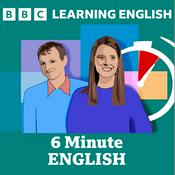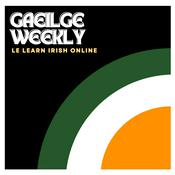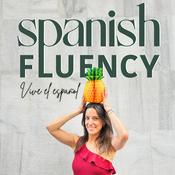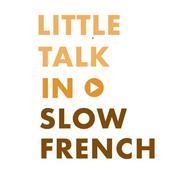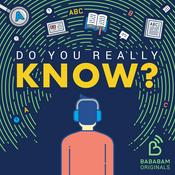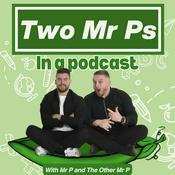1982 episodes

第2895期:How AI could change the skills you need
11/1/2026 | 2 mins.
Are you worried that you can't keep up with AI? Current artificial intelligence systems can do many tasks much quicker than we can. Does this mean that machines will put us out of work?您是否担心自己跟不上人工智能的发展? 当前的人工智能系统可以比我们更快地完成许多任务。 这是否意味着机器会让我们失业?Rather than replace our jobs, it may be more likely that AI will transform the way we work. Previous waves of mechanisation and automation did not cause lasting effects to employment rates. However, the skills valued by the economy could change. Research from Goldman Sachs shows some evidence that AI has affected the US job market differently in different sectors. Being adaptable and understanding how AI and humans can best work together in the industry that you work in is likely to become very important.人工智能更有可能改变我们的工作方式,而不是取代我们的工作。 之前的机械化和自动化浪潮并未对就业率产生持久影响。 然而,经济所重视的技能可能会发生变化。 高盛的研究表明,一些证据表明人工智能对美国不同行业就业市场的影响不同。 适应能力并了解人工智能和人类如何在您所从事的行业中最好地合作可能会变得非常重要。Humans and artificial intelligence have different strengths. AI systems are naturally best suited to tasks that are repetitive, involve data and that are very large. Humans usually perform best when skills and qualities such as leadership, empathy and judgement are required. Recent research from MIT's Sloan School of Management identified which tasks were best done by humans, and which were best done by AI. They found that where humans were better, working together with AI boosted performance above that of humans working alone. Creative tasks could be an area where this collaboration is particularly productive. Professor David Stilwell from Cambridge University highlights that AI's creativity is currently at a similar level to an average human. Other research shows that using ideas generated by AI, even bad ones, helps humans to come up with better ideas more quickly.人类和人工智能有不同的优势。 人工智能系统自然最适合重复性、涉及数据且规模非常大的任务。 当需要领导力、同理心和判断力等技能和品质时,人类通常表现最佳。 麻省理工学院斯隆管理学院最近的研究确定了哪些任务最适合由人类完成,哪些任务最适合由人工智能完成。 他们发现,在人类表现更好的地方,与人工智能一起工作的表现比人类单独工作的表现要高。 创造性任务可能是这种协作特别富有成效的领域。 剑桥大学的大卫·史迪威教授强调,人工智能的创造力目前与普通人处于相似的水平。 其他研究表明,使用人工智能产生的想法,即使是糟糕的想法,也可以帮助人类更快地想出更好的想法。Companies need to look at their workflows and processes to see where using AI alone or in collaboration with humans can be more efficient. They can then decide how best to integrate AI into their workflow. Employees should try to learn how best to use AI to support themselves. Being able to do this effectively will help lead to career success.公司需要审视自己的工作流程和流程,看看单独使用人工智能或与人类协作在哪些方面可以更有效。 然后他们可以决定如何最好地将人工智能集成到他们的工作流程中。 员工应该尝试学习如何最好地利用人工智能来支持自己。 能够有效地做到这一点将有助于实现职业成功。

第2894期:A compassionate judge adjudicates with heart
10/1/2026 | 2 mins.
We've been on the bench for over thirty years. For 25 years, we were on television just in Rhode Island. That's it. 我们做法官已经有三十多年了。在过去的二十五年来,我们的节目只在罗得岛州的电视台播出。仅此而已。I get letters every day, people sending me letters saying, "Please continue to treat people with understanding and compassion."我每天都会收到信件,人们在信中写道:“请继续以理解和同情之心对待他人。”And many people, because of my treatment of people who come before my court, send money to my court saying, "Please use this to help someone else."许多人因我对出庭者的态度而向法庭捐款,并附言:“请用这笔钱帮助他人。”I have a letter from a woman named Angie Chesser. And she said, I got a small bonus from where I work and I would like to donate 100 dollars to help somebody else.我收到了一封来自安吉·切瑟女士的信。她说:“我从工作的地方拿到了一笔小额奖金,想捐出100美元来帮助其他人。”And she actually sent cash. So we're gonna use this to help pay for your fine. What do you say about that? I'm speechless.她还真的寄来了现金。我们准备用这笔钱帮你支付罚款。你觉得怎么样?我无话可说。It says that there is an awful lot of kind, wonderful people in life.生活中有非常多善良而美好的人。Many times, even though I am helping people, the city is still getting money, because I have people from all over the world.很多时候,尽管我在帮助人们,但这座城市仍然能获得收益,因为我的客户来自世界各地。I have people from Iraq who sent money, people from France, from Italy, from China, from Russia, all over the world, and the United States, send in checks, saying, "Please use this to help someone else."有来自伊拉克的人寄钱,有来自法国、意大利、中国、俄罗斯的人,还有美国人,他们寄来支票说:“请用这些钱去帮助其他人。”So we have touched the heart of people all over the world. 32 dollars. 32 dollars.我们触动了全世界人民的心。这里有三十二美元。My father was an immigrant from Italy. We were very poor. We had very little material things, but we had a great deal of love in our house.我的父亲是来自意大利的移民。我们非常贫穷。我们拥有的物质财富很少,但家里却充满了无尽的爱。And my dad's vision was always that life would be better for his children. Maybe I climbed the ladder of success.我父亲的愿景始终是让他的孩子们过上更好的生活。也许我已经爬上了成功的阶梯。It is not enough to climb the ladder of success. The key is to leave the ladder down, so that others can climb the ladder, too.仅仅爬上成功的阶梯是不够的,关键在于把梯子放下来,好让他人也能攀登。

第2893期:Can trees remember?
09/1/2026 | 2 mins.
The English oak is one of Britain's most iconic trees. Broad and majestic, this tree supports more species than any other native tree in the UK, from blackbirds, to squirrels to butterflies. For centuries it has stood watching the landscapes change and our societies evolve. The question is, can a tree remember, learn and adapt to new environments within its lifetime? Does wisdom lie within its boughs? 英国橡树是英国最具标志性的树木之一。 这棵树宽阔而雄伟,比英国任何其他本土树木都支持更多的物种,从黑鸟、松鼠到蝴蝶。 几个世纪以来,它一直见证着景观的变化和我们社会的演变。 问题是,一棵树在其一生中能否记忆、学习和适应新环境? 智慧就在它的枝干里吗? Trees provide a physical record of their life experiences in their growth rings. Dendrochronologists take samples from a tree trunk and are able to see whether a tree has been through a forest fire, periods of drought or a rainy season. But these markings are more than just battle scars. An organisation called Membra studies a number of UK tree species to see how they 'remember' and respond to environmental stress. Their research shows that environmental events do not change the tree's genetic code, but they can change how its genes react, which helps the tree adapt and defend itself against future drought, disease or climate extremes. So, trees don't have conscious memories of events like humans do – they remember through biological, structural changes.树木的年轮提供了它们生命经历的物理记录。 树木年代学家从树干上采集样本,能够判断一棵树是否经历过森林火灾、干旱期或雨季。 但这些标记不仅仅是战斗伤痕。 一个名为 Membra 的组织研究了一些英国树种,以了解它们如何“记忆”并应对环境压力。 他们的研究表明,环境事件不会改变树木的遗传密码,但可以改变其基因的反应方式,这有助于树木适应并防御未来的干旱、疾病或极端气候。 因此,树木不像人类那样对事件有意识的记忆——它们通过生物、结构的变化来记忆。That's a tree's defence in its own lifespan, but can their memories be passed down to future generations? Membra's research found that seedlings were more tolerant to drought when their parents had experienced repeated drought. And in one of the world's largest climate change experiments, published in Nature Climate Change by Richard Norby and colleagues, they pumped extra CO2 into an oak forest. Not only did the trees absorb more CO2, but the offspring of those trees also grew faster and were more resistant to disease, suggesting that tough conditions might make trees' offspring more resilient.那是一棵树在其生命周期中的防御,但它们的记忆能遗传给后代吗? 曼布拉的研究发现,当父母经历过反复干旱时,幼苗对干旱的耐受性更强。 在理查德·诺比及其同事在《自然气候变化》杂志上发表的世界上最大的气候变化实验之一中,他们向橡树林中注入了额外的二氧化碳。 这些树木不仅吸收了更多的二氧化碳,而且这些树木的后代也生长得更快,对疾病的抵抗力也更强,这表明恶劣的条件可能会让树木的后代更有弹性。What does this all mean? There has been a wave of tree planting schemes throughout the UK, with aims to improve biodiversity and our defence against climate change. Fast-growing and short-lived tree species are often favoured in these schemes to quickly increase tree numbers. But trees that live longer, like oaks, which have a greater memory and resilience, could be a better choice. 这一切意味着什么? 英国各地掀起了一波植树计划,旨在改善生物多样性和抵御气候变化。 这些计划通常倾向于生长快速且寿命短的树种,以快速增加树木数量。 但寿命较长的树木,如橡树,具有更强的记忆力和恢复力,可能是更好的选择。

第2892期:New study shows four pivotal ages for your brain
08/1/2026 | 0 mins.
4,000 brain scans of people up to the age of 90 have revealed our brains go through five distinct eras. The first is childhood. This is when the brain is rapidly growing but getting less efficient over time.对 4000 名最大年龄为 90 岁的人的脑部扫描显示出我们的大脑会经历五个不同的阶段。首先是童年期。在这个阶段中,大脑会快速地生长,但效率会逐渐降低。Then, a surprisingly long period of adolescence kicks in, starting at the age of nine and lasting until you're 32 when the brain peaks. You then get the longest stage, adulthood, which lasts three decades.在这之后,一段漫长到令人有些惊讶的青春期就会开始,这段时期从九岁开始一直持续到 32 岁,那时你的大脑会达到最佳状态。然后你会迎来最长的成年期阶段,持续约三十年。Then comes 66 and early ageing. The effects are subtle, but the brain is beginning to fragment as smaller regions work tightly together – it's like a band starting their own solo projects. At 83, this accelerates as we enter the final phase.然后在 66 岁时进入早期衰老阶段。这个阶段的影响并不明显,但大脑会开始逐渐碎片化,更小的区域会开始紧密合作,就像一个乐队中的成员开始推出他们的个人作品一样。到 83 岁时,这个现象会开始加速,大脑进入最后的晚期阶段。

第2891期:Ultra-processed food is a global health threat, experts warn
07/1/2026 | 0 mins.
The international team of researchers says ultra-processed foods present too great a danger to health to wait any longer to take action against them.一个国际研究团队称,超加工食品对健康的危害太大,所以必须立即采取行动来应对。They say products containing high levels of saturated fat, salt, sugar and additives are displacing fresh food. Examples include processed meats, crisps, mass-produced bread, ready meals and fizzy drinks.研究人员表示,含有大量饱和脂肪、盐、糖和添加剂的食品正在取代新鲜食物,比如加工肉类、炸薯片、批量生产的面包、即食餐和碳酸饮料。The researchers take aim at a handful of massive food corporations, calling for them to face marketing restrictions and extra taxes.研究人员将矛头指向了少数几家大型食品公司,呼吁对它们施加营销限制并征收额外的税费。
More Education podcasts
Trending Education podcasts
About 英语每日一听 | 每天少于5分钟
Listen to 英语每日一听 | 每天少于5分钟, The Mel Robbins Podcast and many other podcasts from around the world with the radio.net app

Get the free radio.net app
- Stations and podcasts to bookmark
- Stream via Wi-Fi or Bluetooth
- Supports Carplay & Android Auto
- Many other app features
Get the free radio.net app
- Stations and podcasts to bookmark
- Stream via Wi-Fi or Bluetooth
- Supports Carplay & Android Auto
- Many other app features


英语每日一听 | 每天少于5分钟
download the app,
start listening.

